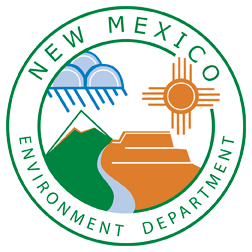Community Public Water Systems need to ensure the sites they are collecting from correct sampling locations
The Lead and Copper Rule requires public water systems to collect from lead and copper sites that are at highest risk for elevated levels of corrosion based on the Sample Site Tier Criteria. Community Public Water Systems need to be able to confirm the sample sites they are using meet the rule requirements prior to beginning sample collection. Each water system must identify a pool of targeted sampling sites based on the lead service line inventory.
Lead and Copper Sampling Tiers
The sampling sites for a community water system’s sampling pool must consist of single-family structures that are served by a lead service line (“Tier 1 sampling sites”). When multiple-family residences comprise at least 20 percent of the structures served by the water system, the system may include these types of structures in its Tier 1 sampling pool, if served by a lead service line. Sites with lead status unknown service lines must not be used as Tier 1 sampling sites.
| Sampling Tiers | Sampling Tier Definitions |
| Tier 1 | Sampling sites for a community water system’s sampling pool must consist of single-family structures that are served by a lead service line (“Tier 1 sampling sites”). When multiple-family residences comprise at least 20 percent of the structures served by the water system, the system may include these types of structures in its Tier 1 sampling pool, if served by a lead service line. Sites with lead status unknown service lines must not be used as Tier 1 sampling sites. |
| Tier 2 | Community water systems with insufficient Tier 1 sampling sites must complete it’s sampling pool with “Tier 2 sampling sites,” consisting of buildings, including multiple-family residences that are served by a lead service line. Sites with lead status unknown service lines must not be used as Tier 2sampling sites. |
| Tier 3 | Community water system with insufficient Tier 1 and Tier 2 sampling sites must complete its sampling pool with “Tier 3 sampling sites,” consisting of single-family structures that contain galvanized lines identified as being downstream of a lead service line (LSL) currently or in the past, or known to be downstream of a lead gooseneck, pigtail or connector. Sites with lead status unknown service lines must not be used as Tier 3 sampling sites. |
| Tier 4 | Community water system with insufficient Tier 1, Tier 2, and Tier 3 sampling sites must complete its sampling pool with “Tier 4 sampling sites,” consisting of single-family structures that contain copper pipes with lead solder installed before the effective date of the State’s applicable lead ban. Sites with lead status unknown service lines must not be used as Tier 4 sampling sites. |
| Tier 5 | Community water system with insufficient Tier 1, Tier 2, Tier 3, and Tier 4 sampling sites must complete its sampling pool with “Tier 5 sampling sites,” consisting of single-family structures or buildings, including multiple family residences that are representative of sites throughout the distribution system. A representative site is a site in which the plumbing materials used at that site would be commonly found at other sites served by the water system. Water systems may use non-residential buildings that are representative of sites throughout the distribution system if and only if there are an insufficient number of single-family or multiple family residential Tier 5 sites available. |
Updating your lead and copper sampling plan
As part of conducting LCRR Lead Service Line Inventories, water systems should use this as an opportunity to confirm or update the sample locations being used for lead and copper. By conducting these inventories the water system should confirm that their sites meet the requirements of the rule based on the materials present in the distribution and the residents willing to participate in sample collection.
The excel sheet below can be downloaded and edited for your system’s site plan and the instructions will detail the process to confirm your system has enough sites that meet the rule requirements.
Additional information about Lead and Copper sampling location requirements can be found at the Code of Federal Regulations.
Return to Lead and Copper Rule Revision

